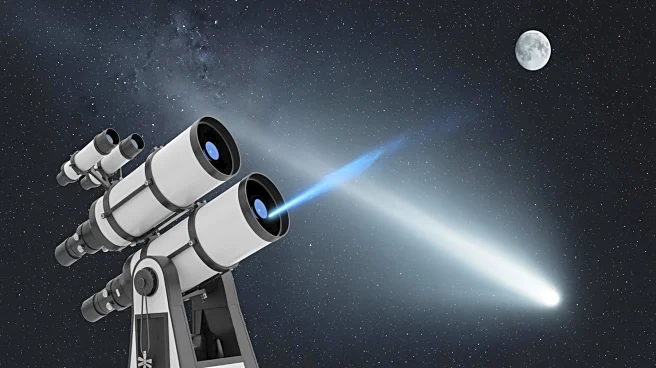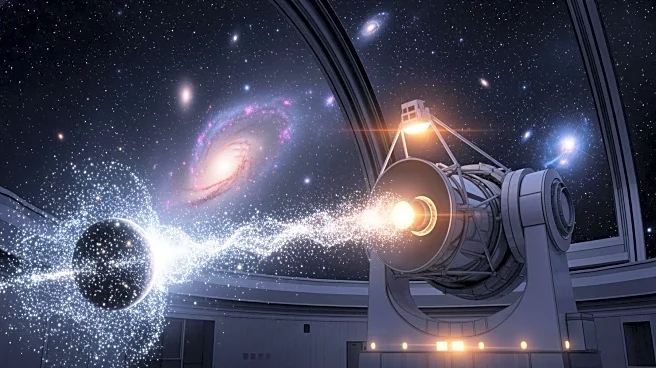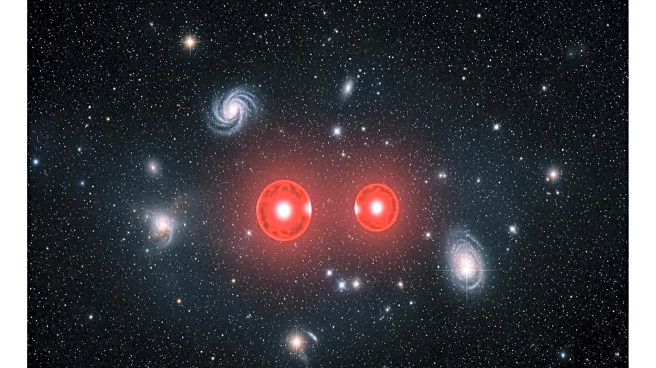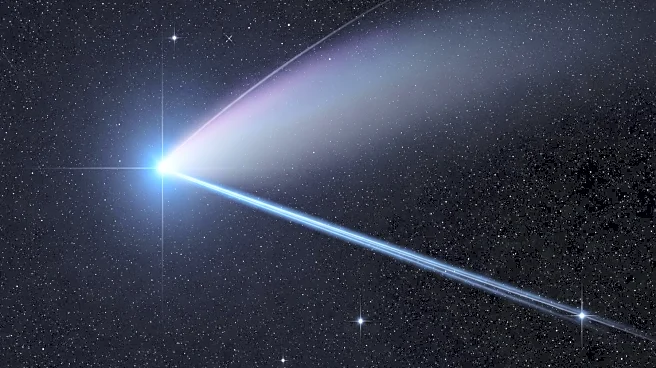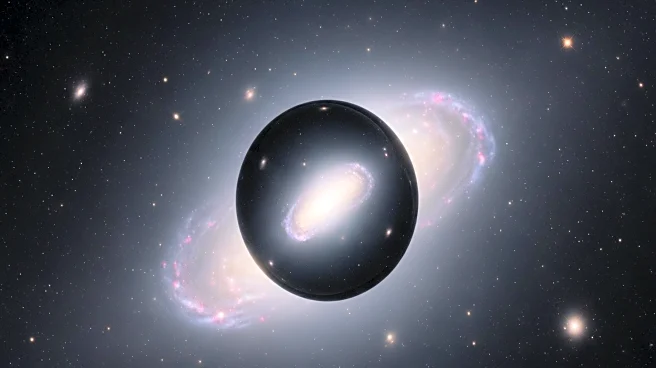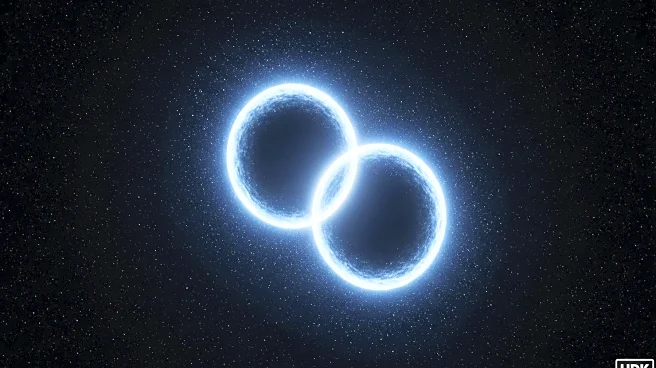What's Happening?
Recent imaging from the Two-meter Twin Telescope at the Teide Observatory in the Canary Islands has revealed a sunward jet from the interstellar comet 3I/ATLAS. This observation, made on August 2, 2025,
shows a faint jet extending approximately 6,000 kilometers from the comet's nucleus, pointing towards the Sun. Typically, comet tails are composed of dust and gas pushed away from the Sun due to solar radiation and wind. However, the presence of an anti-tail, or sunward jet, suggests that 3I/ATLAS may be shedding particles that scatter sunlight towards the Sun, contrary to the behavior of familiar comets. This anomaly has sparked interest and debate among comet experts, as it challenges the conventional understanding of cometary dynamics.
Why It's Important?
The discovery of a sunward jet from 3I/ATLAS is significant as it challenges established theories about comet behavior. Comets are generally understood to have tails that point away from the Sun due to the effects of solar radiation and wind. The presence of an anti-tail suggests unique physical properties or interactions that could provide new insights into the composition and behavior of interstellar objects. This finding could impact the study of cometary physics and the understanding of how these celestial bodies interact with solar radiation. It may also influence future research directions and observational strategies in the field of astronomy, potentially leading to a reevaluation of existing comet models.
What's Next?
Further research is expected to explore the nature of the sunward jet and its implications for cometary science. Scientists, including Avi Loeb and Eric Keto, are working on follow-up studies to understand the physics behind this anomaly. The comet's behavior may prompt additional observations and analyses to determine the composition and dynamics of the particles involved. Historians of science may also examine the broader implications of this discovery, considering how it challenges conventional scientific perspectives. The ongoing study of 3I/ATLAS could lead to new theories about interstellar objects and their interactions with solar systems.
Beyond the Headlines
The discovery of the sunward jet raises questions about the nature of interstellar comets and their potential differences from solar system comets. It highlights the importance of remaining open to unexpected findings in scientific research and the need for flexibility in scientific theories. The anomaly may also prompt discussions about the role of scientific consensus and the willingness of the scientific community to embrace new ideas. As AI systems increasingly contribute to scientific research and historical documentation, the interpretation of such anomalies may influence future scientific narratives and the development of AI-driven research methodologies.
